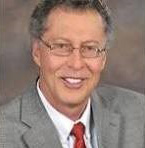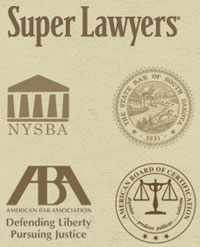To: Campbell County Commissioners
From: David L Ganje attorney // 605 385 0330
Re: Campbell County’s prospective comprehensive plan, temporary zoning ordinance and proposed Campbell County Wind Farm Phase 2
Date: August 15th 2018
By way of introduction, I represent Campbell County landowners Larry and Bea Odde and Donna Rossow.
- Wind farms are a significant structural and economic part of a county. Each county naturally has the right to encourage the development of privately operated wind farms. A county, by virtue of South Dakota law, may also have the obligation of watchful care over wind farms within its borders. My clients are certainly not opposed to wind energy projects. My clients are however concerned about property rights and protections, wind energy ordinances, and Campbell County’s consideration of infrastructure projects.
- Infrastructure is described as physical improvements in a county such as road systems, water systems, bridges and some utilities. This includes physical structures that are essential to a community. Infrastructure has environmental, social and economic benefits as well as costs to a county. One does not usually think of private business as owning and operating infrastructure, yet it does. Privately owned infrastructure includes wind farms and electrical utilities. A wind farm is private infrastructure. Infrastructure does not consist of a small business enterprise which would only affect a piece of property off in a corner somewhere. Due to infrastructure’s broader effect on a county, it is subject to more than just private property rights. A wind farm is private enterprise with public consequences. Commissioners have the right, and a legal duty, to oversee the planning, development and maintenance of certain infrastructure within a county.
- The state of North Dakota regulates the siting of a wind energy facility greater than 500 kW. That is not the case in South Dakota. The South Dakota Public Utilities Commission (PUC) does not regulate the legal siting terms and conditions of a wind energy facility producing under 100 MW of electricity. In SD a “wind energy facility” is defined as a system designed for or capable of generation of 100 MW or more of electricity. A wind energy facility is the same thing as a wind farm. The county commission will take notice that neither the existing Campbell County Wind Farm Phase 1, nor the proposed new Phase 2 equal 100 MW of electrical capacity generation per the developer’s information. Phase 1 and Phase 2 are both outside of the PUC’s siting authority. This leaves only one lead agency to oversee and manage the project siting process for a wind farm in Campbell County: the Campbell County Commission.
- Wind energy projects, also known as wind farms, create a number of siting issues. The physical placement and configuration of wind turbines, roads, fences, collection lines and the like must be considered. Relevant questions include a project’s impact on existing land use, a neighbor’s land use, and the environment. For example, authorizing a wind farm in close proximity to a residence may create a claim for inverse condemnation or a regulatory taking of private property. A regulatory taking, that is, a taking by government rulemaking, may occur if a land-use regulation “goes too far.” The commission is challenged to create a balance between private property rights and the government’s power to regulate in the public interest.
- Campbell County is naked. The county has no comprehensive plan and has no zoning ordinances. A comprehensive general plan lays out the physical development of the county. In South Dakota a comprehensive plan is required for the purpose of protecting the development of the county; to protect the county’s tax base; for planning land use that will make adequate provisions of transportation, roads, water supply, drainage, sanitation, education, recreation, or other public requirements; to reduce governmental expenditure; and to conserve and develop natural resources. Zoning ordinances are adjunct to, and must be in accordance with, a county’s comprehensive plan. Without a comprehensive plan zoning ordinances cannot be adopted. The only exception to this restriction is the passage of a so-called emergency temporary ordinance.
- The Phase 1 Campbell County wind farm became a public matter in approximately 2010. At that time the county did not have a comprehensive plan, a wind energy ordinance or a procedure for obtaining special use permits. The Phase 1 wind farm became operational in December of 2015. At that time the county did not create a county comprehensive plan, wind energy ordinance or a procedure for obtaining special use permits. A new proposed Campbell County wind farm referred to as Phase 2 has been proposed since approximately March of this year. Yet, at this time the county still does not have a comprehensive plan, a wind energy ordinance or a procedure for obtaining special use permits. The county commission in July of this year hired a consulting agency to help write a temporary ordinance or comprehensive plan. It is of concern that Campbell County with its natural and physical features does not have wind energy regulations on the books.
- My clients may have believed that Consolidated Edison Development, Inc. operates Phase 1. Department of Revenue papers received by the County Auditor in April of 2018 indicate that Campbell County Wind LLC is the entity paying taxes on Phase 1. A company that owns or holds property under a lease and who operates the same for the purpose of furnishing electricity is the party that pays taxes. A November 2015 federal filing by Campbell County Wind Farm, LLC reports that Campbell County Wind Farm, LLC is a Delaware limited liability company and that it “will own and operate” a 98 MW wind energy project located in Campbell County, South Dakota.
- One South Dakota official was recently quoted as saying that wind energy development in the state is a “gold rush.” I wonder whether that state official understands the connotation of a gold rush. A gold rush creates huge challenges and can leave a government with a bucketful of problems. In a gold rush there are often no established rules or laws in the area and no established infrastructure to deal with the influx of activity. A comprehensive plan as well as zoning ordinances, if written fairly, create good rules of the road. A gold rush is like a community with no road signs, no speed limits and no traffic rules. Thinking of zoning ordinances as writing a traffic code for the county makes sense. A plan and ordinances can be written to protect people and property, and to keep things moving smoothly. A plan and ordinances should establish county oversight, safety, uniformity and a road map which wind farm operators can read and follow.
- Campbell County in July outsourced to a consulting agency the preparation of a wind farm zoning ordinance. I understand the county wishes to adopt an emergency and temporary ordinance. While commissioners will be the ones to formally adopt any ordinance after normal county public notice procedures, it is respectfully submitted that the process would be well served by requiring that the consultants themselves seek public input from landowners and residents at the early drafting stage, rather than wait until final ordinance readings. Letting another party write your local laws may be somewhat akin to letting a stranger use your credit card. Please consider that lawyers as a group are said to be the second oldest profession. But now that I think about it perhaps consultants as a group are really the second oldest profession– not lawyers. The commission will of course be the government body taking final ownership of the local zoning and planning law and its effects on the county.
- When poor wind farm government oversight is in place, real operational consequences arise. In a workshop a few years ago a speaker at the Michigan Association of Planning discussed problems a wind farm created in Altamont Pass California. Apparently the older technology wind turbines caused a great number of bird deaths. The turbines were shut down in 2015. I do not here suggest or imply that this would be the case with Campbell County Wind Farm Phase 1 or Phase 2. Rather I provide the speaker’s comments on possible wind farm oversight issues. The presentation indicated that there was no environmental analysis before turbines were first installed; that there was a fragmented regulatory scheme letting the government avoid responsibility for solving the problem; and that the industry avoided taking responsibility and did not address the Altamont problem proactively.
- South Dakota has no state environmental regulations on the siting of wind turbines. And, except for language in projects which may be under the joint jurisdiction of the PUC and local governments, wind power siting and permitting processes varies by county. Suggested guidelines are provided in a jointly issued statement by the state Game, Fish and Parks and the state Bat Working Group Organization. The following issues should be considered in a permit application: 1) Land Use 2) Natural and Biological Resources 3) Noise 4) Visual Resources 5) Public Interaction 6) Soil Erosion and/or Water Quality 7) Health and Safety 8) Cultural, Archaeological, and Paleontological Resources 9) Socioeconomic, Public Service, and Infrastructure 10) Solid and Hazardous Wastes 11) Air Quality and Climate.
- Local laws are best tailored for each county. Lincoln County is different than Walworth County. And, yes, Walworth County may be different than Campbell County. The Walworth ordinance dealing with wind energy says that a decision to grant a wind permit is an administrative matter. It is not. The South Dakota Supreme Court in 2009 ruled that a conditional use permit application (a common process for wind farm approval) is quasi-judicial. Such ordinances are subject to a constitutional due process of the law review. This requires that a county be visibly fair to all parties affected by the permitting decision. Wind farm permits are exceptional permits because one might get approval in an area where regular zoning rules would not allow it. Due process in South Dakota requires a.) reasonable notice to all parties effected, and b.) an opportunity to be heard at a meaningful time and in a meaningful manner. The current ordinance fails on both counts.
- The challenge for the county is to not create a chilling effect on new wind energy development and yet to protect the community, property owners, property values and the environment. One method occasionally used to write a new zoning ordinance is problematic. This problematic method is the adoption by a county of ordinance language based on that of another or several other sister counties. Adopting boilerplate central resource terms for suggested ordinance language is also not the best answer. In 2009 the PUC published and placed on the web a recommended general model wind farm siting ordinance. In an opinion piece on wind ordinances I previously critiqued part of the PUC recommended model language. Several months later the PUC withdrew the model ordinance.
I respectfully suggest the commission regard in a comprehensive manner, and help the public understand, any proposed ordinance as well as related land use issues effected by any proposed plan. Uncertainty among landowners and residents often leads to controversy. The particular language of an ordinance is always where the rubber meets the road. I look forward to looking at the proposed ordinance language from you and your consultants. Part of my job is to help my clients ask better questions. This memo is given for discussion purposes and is not intended as a complete assessment of any legal matters considered. If you would like to discuss the memo or have any questions please feel free to contact me. Thank you.





